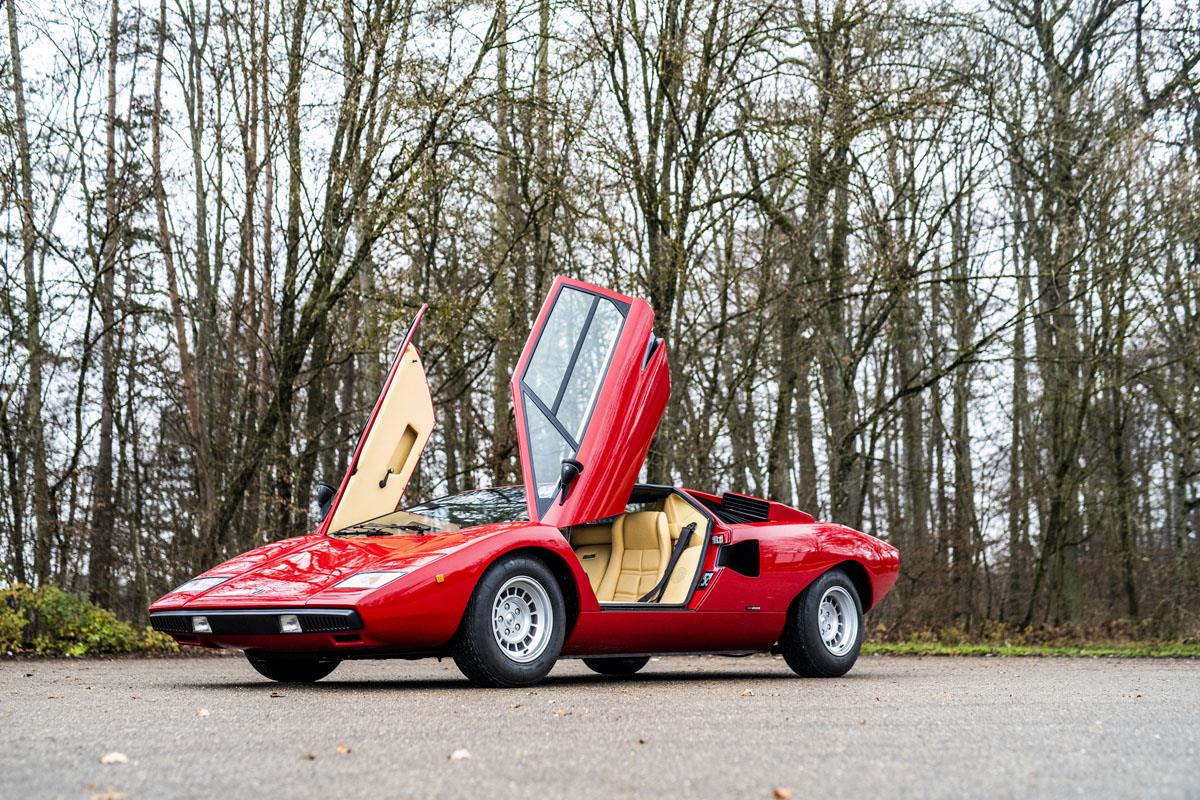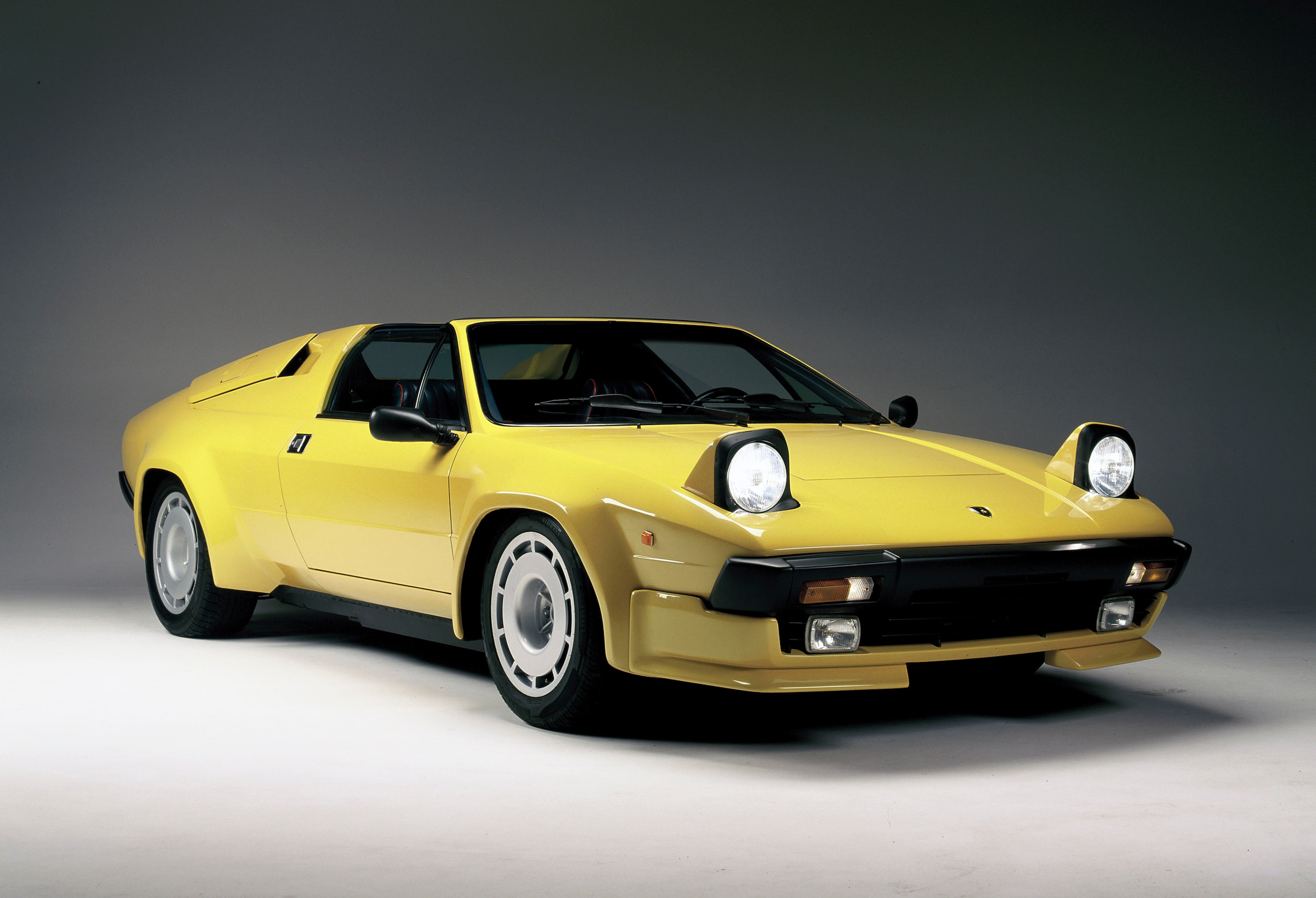The company was later owned by some Americans who had hope for the car manufacturer. They quickly teamed up with a major automotive manufacturer and made improved versions of the Lamborghini cars. They reduced the weight of the vehicle by using lighter materials to make the car. Later on, Lamborghini joined forces with Chrysler, and they brought forth a V12 engine that had a 3.5 Liter capacity that was ready within a few months. With the release of models like the Murcielago, Gallardo, and Huracan LP concept, sales jumped worldwide. Lamborghini has then reported record sales and is now valued at a considerable amount of money. Lamborghini not only represents superfast cars but is also a benchmark for luxurious super sports cars that are ideal for each customer's needs.
A Decade of Design and Transition
In 1970, Lamborghini debuted the Bertone-designed Lamborghini Urraco. The 2+2 sports car originally debuted at the Geneva Auto Show to show off the new lineup of Lamborghini model vehicles. The Urraco offered a V8 powertrain with an output of 220 horsepower. The powertrain was the first V8 engine to be mated to a Lamborghini production car.
The body of Urraco was chosen as a way for families with children to enjoy the ride. Because of the ongoing world financial crisis going on at the time, the Lamborghini Urraco would not make it to market until 1973. During its production run from 1973 through 1979, Lamborghini made 791 Urraco models .
The oil crisis of 1973 was tough on the sale of high-performance cars. With the implementation of stricter emission and fuel economy standards, the Lamborghini brand suffered. During this time, Ferruccio Lamborghini sold the remaining 49% of the automaker to René Leimer, a close friend of majority shareholder Georges-Henri Rossetti.
Ferruccio later retired to his estate on the shore of Lake Trasimeno near Umbria, Italy. He would spend his later years managing several business interests in addition to designing his very own golf course. He would also take in his passions for both hunting and producing wines.
Back in 1971, Lamborghini debuted the Marcello Gandini-designed LP 500 at the Geneva Motor Show to replace Lamborghini Miura. Several years later, and after a redesign of its 4.97-liter V12, the car was produced as the Countach. Taking from the Italian Piedmontese word for astonishment by Nuccio Bertone, the Countach soon became a beaming icon of the automotive posters the world over.
The production model Countach LP 400 featured a 4.0-liter V12 developing 370 horsepower. In addition, the exterior production design offered far more aggressive styling cues than had originally been conceived by Bertone.
Large air scoops and vents at the back of the car to keep the Countach powertrain cool while on the road. However, the Countach LP 400 did retain much of its sleek looks, giving it low drag at higher speeds.The chassis was constructed of a steel space frame manually welded onto the car. The body was constructed of aluminum body panels, with a fiberglass panel underneath the passenger compartment.
In 1976, Lamborghini would debut the Silhouette. Based on the Lamborghini Urraco LP300, the Silhouette offered a removable Targa roof placed in the back seat when not in use. Powering the Lamborghini Silhouette was a 3.0-liter V8 developing 265 horsepower.
Because Lamborghini was not importing cars at the time, only a handful were sold in the United States. In total, 54 examples were produced between 1976 and 1979.
Bankruptcy and Restructure
As the 1970's wound to a close, the fortunes of Lamborghini became far direr. The situation became tenuous; the Italian court system took control of the automaker after it when into bankruptcy in 1978.During this administration, entrepreneur brothers Jean-Claude and Patrick Mimran took control of the automaker in 1980 for receivership. The Lamborghini Silhouette was reworked into the Lamborghini Jalpa, becoming the entry-level car in the Lamborghini lineup.
Powering the Jalpa was a 3.5 liter V8 powertrain developing 255 horsepower and 225 pound-feet of torque. As the entry-level Lamborghini, 410 examples were sold to customers from 1981 to 1988. The 410 cars sold made the Jalpa one of the most successful V8 Lamborghini vehicles to that point in time.During this restructuring period, the Lamborghini Countach was sold to American customers for the first time in 1982 as the LP 500S in 1982. Two years later, the Lamborghini Countach LP 5000 Quattrovalvole made its debut to the public.
The LP5000 Quattrovalvole represented an evolution of the Countach model, featuring a bored-out 5.2-liter V12 with four valves per cylinder. Quattrovalvole is Italian for four valves, hence the name. Some of the body panels were now made from Kevlar.The powertrain also featured a fuel injection system for the American market, delivering a horsepower rating of 414 horsepower. European models used six Weber carburetors, delivering 449 horsepower, along with 369 pound-feet of torque.
In 1986, Lamborghini would debut LM002, the brand's first Sport Utility Vehicle. Derived from a military project vehicle called the "Cheetah," the LM002 offered full leather trim, tinted power windows as well as a premium audio system.The Lamborghini LM002 was offered with a 5.2-liter V12 with 414 horsepower along with 369 pound-feet of torque. To keep you on the road for longer, the LM002 came with a 45-gallon fuel tank.
One year later, though, ownership of Lamborghini changed again, with the Chrysler Corporation purchasing the automaker from the Mimran brothers. Chrysler Chairman Lee Iacocca spearheaded the purchase to produce 5,000 vehicles a year and build a car that could compete with Ferrari on the road and the track.
During this time, Lamborghini ventured into the world of Grand Prix racing with the help of motorsport veteran Mauro Forghieri. Lamborghini Engineering S.p.A, as it was known, produced 3.5-liter V12 engines for both Lotus and Larrousse F1 teams beginning in 1988. Despite one podium finish at the 1990 Japanese Grand Prix, the Lamborghini F1 program was discontinued after 1993.
In January of 1990, the Gandini-designed Lamborghini Diablo made its debut in Monte Carlo. At its launch, the Diablo was the fastest production car on the road, achieving a top speed of over 203 miles per hour. The performance was made possible by a 5.7-liter V12 producing 485 horsepower.
Due to the popularity of the Diablo and emergence service and spare parts support network, Lamborghini turned a profit in 1991. However, sales of the Diablo sunk. With the company losing money, Chrysler sought to end its ownership. In 1994, Indonesian holding company MegaTech bought out Lamborghini for Chrysler.
Over the next few years, Lamborghini would go through a restructuring to expand the brand's offering and increase sales. With sales buoyed by the Diablo SuperVeloce model, the company was split in owner 60/40, with an Indonesian company taking a 40% ownership stake with MegTech holding the other 60%.
A Turn to Stability
After turning a profit in 1997, Lamborghini was then sold to its current owners in Volkswagen AG in 1998. As part of a full overhaul of the company, Lamborghini was reworked into a holding company for licensing and marine engine manufacturing, while a subsidiary would concentrate on designing and building new Lamborghini Car.
In 2001, Lamborghini would design their first new car in over a decade with the Murcielago as a replacement for the outgoing Diablo. Sporting a 6.2-liter V12, the Murcielago was good for 572 horsepower. The launch of the Murcielago coincided with a change in fortune for the company, as for the first time in many years, it finally found stability.
Over the next few years, Lamborghini would debut the smaller Lamborghini Gallardo with a V10 powertrain. In addition, Lamborghini would introduce the special edition Reventon and reach a sales peak of 2,430 models in 2008.
At the turn of the decade, Lamborghini would continue to expand its portfolio with the debut of the 690-horsepower V12 Lamborghini Aventador, along with the launch of the prototype Lamborghini Veneno, a car designed as an ultimate interpretation of a racing car.
In 2016, Lamborghini would celebrate the 100th birthday of its founder Ferruccio Lamborghini with the Centenario. Offering a 6.5-liter with 759 horsepower, the Centenario offered an all-wheel drive derived from the Aventador. At the rear back, diffusers gave the Centenario extra downforce at high speed.
In 2017, Lamborghini would launch its first SUV since the LM002 with the Urus. It features carbon-ceramic brakes along with a 4.0-liter V8 powertrain developing 641 horsepower.
Visit Lamborghini Greenwich Today!
Now, any customer worldwide can have a superfast, high-performance, luxury-filled vehicle in their driveway anytime they want. Visit Lamborghini Greenwich for more insights on the history of Ferruccio Lamborghini and the Lamborghini product itself.

